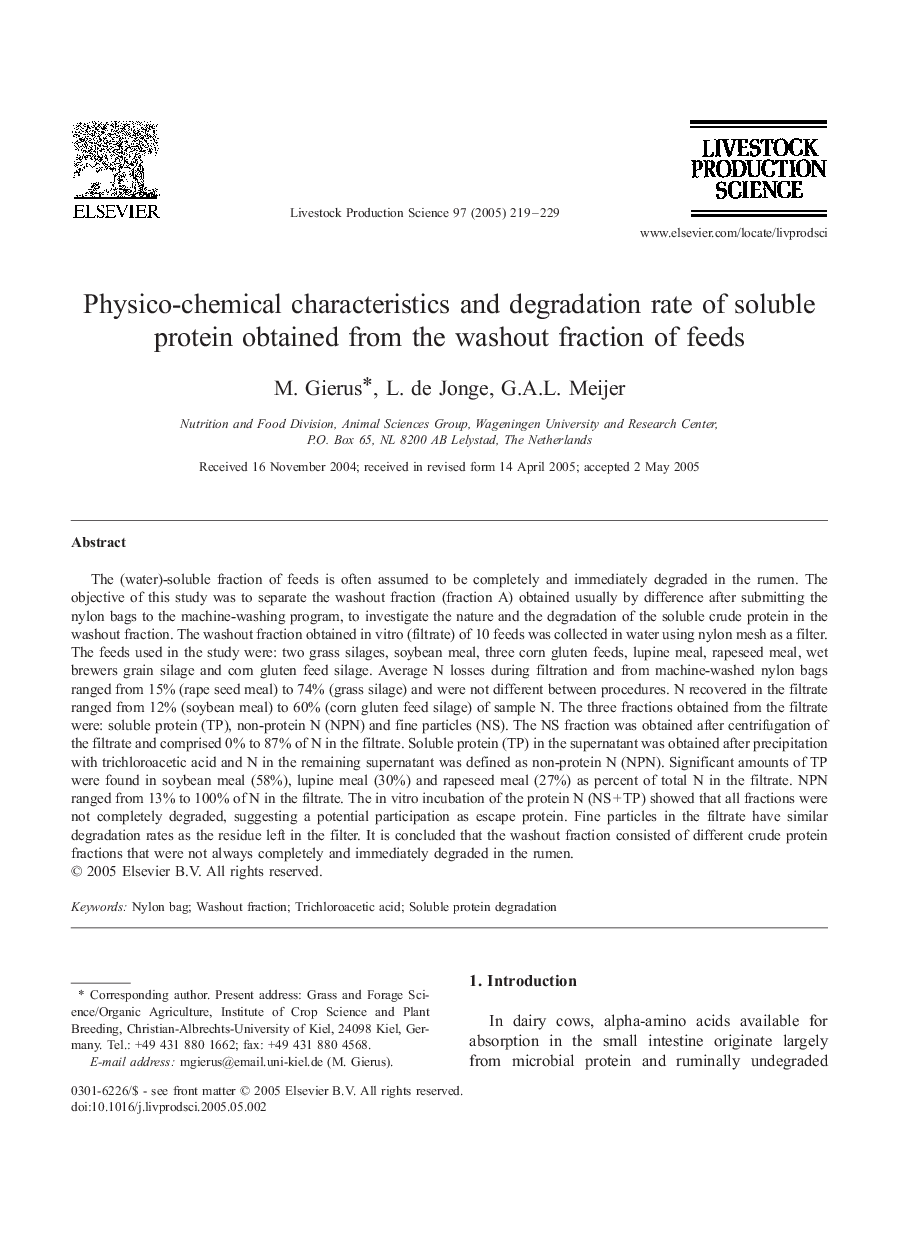| Article ID | Journal | Published Year | Pages | File Type |
|---|---|---|---|---|
| 8982622 | Livestock Production Science | 2005 | 11 Pages |
Abstract
The (water)-soluble fraction of feeds is often assumed to be completely and immediately degraded in the rumen. The objective of this study was to separate the washout fraction (fraction A) obtained usually by difference after submitting the nylon bags to the machine-washing program, to investigate the nature and the degradation of the soluble crude protein in the washout fraction. The washout fraction obtained in vitro (filtrate) of 10 feeds was collected in water using nylon mesh as a filter. The feeds used in the study were: two grass silages, soybean meal, three corn gluten feeds, lupine meal, rapeseed meal, wet brewers grain silage and corn gluten feed silage. Average N losses during filtration and from machine-washed nylon bags ranged from 15% (rape seed meal) to 74% (grass silage) and were not different between procedures. N recovered in the filtrate ranged from 12% (soybean meal) to 60% (corn gluten feed silage) of sample N. The three fractions obtained from the filtrate were: soluble protein (TP), non-protein N (NPN) and fine particles (NS). The NS fraction was obtained after centrifugation of the filtrate and comprised 0% to 87% of N in the filtrate. Soluble protein (TP) in the supernatant was obtained after precipitation with trichloroacetic acid and N in the remaining supernatant was defined as non-protein N (NPN). Significant amounts of TP were found in soybean meal (58%), lupine meal (30%) and rapeseed meal (27%) as percent of total N in the filtrate. NPN ranged from 13% to 100% of N in the filtrate. The in vitro incubation of the protein N (NSÂ +Â TP) showed that all fractions were not completely degraded, suggesting a potential participation as escape protein. Fine particles in the filtrate have similar degradation rates as the residue left in the filter. It is concluded that the washout fraction consisted of different crude protein fractions that were not always completely and immediately degraded in the rumen.
Keywords
Related Topics
Life Sciences
Agricultural and Biological Sciences
Animal Science and Zoology
Authors
M. Gierus, L. de Jonge, G.A.L. Meijer,
